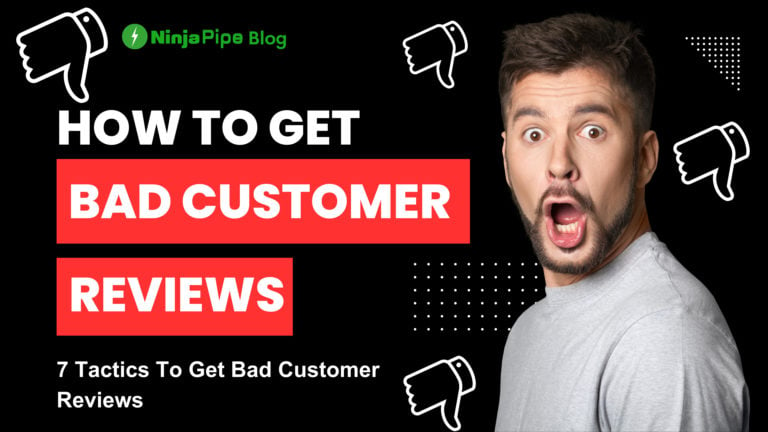Unlock the secrets of social media algorithms. Dive into how they operate and impact your online experience.
Introduction
Social media has woven itself into the fabric of our daily lives, with billions of people worldwide engaging on various platforms, both old and new. Platforms like TikTok and Twitch are becoming increasingly attractive to brands seeking to connect with fresh audiences. Amidst this digital whirlwind, social media algorithms play a crucial role in creating order and relevance.
Social media algorithms are in a constant state of flux, posing challenges for marketers aiming to stay ahead of the game. While we may not have access to every nitty-gritty detail, we do possess a solid understanding of their underlying principles. These algorithms dictate where your content appears on users’ feeds and how your social media ads are ranked.
In this comprehensive guide, we will unravel the mysteries of algorithms in the social media landscape. We’ll delve into what exactly an algorithm is, explore different social media algorithms, and provide insights on optimizing your content distribution and engagement across various platforms, including Facebook, Instagram, TikTok, Twitter, LinkedIn, and Pinterest.
What Are Social Media Algorithms?
At their core, algorithms are mathematical sets of rules that govern how data behaves. In the realm of social media, algorithms serve as the architects of order, directing the placement and ranking of content and advertisements. For instance, on Facebook, an algorithm guides the display of pages and content in a particular order.
Given the staggering global user base of social media, with an estimated 60% of the world’s population engaged on these platforms and 150 million new users joining in April 2023, the management and monitoring of content become monumental tasks. Algorithms, therefore, assume a pivotal role in determining the legitimacy and positioning of social media accounts and content.
While there may be no definitive manual outlining the intricacies of these algorithms, we possess enough knowledge to navigate this digital landscape and thrive within it. Recent years have seen a shift towards user-friendly algorithms, similar to Google’s approach, emphasizing relevant, high-quality content and meaningful engagement with consumers.
Why Do Social Algorithms Exist & Why Do They Change?
Social media algorithms are designed to curate content within a user’s feed. With an overwhelming volume of content available, these algorithms act as gatekeepers, selecting and prioritizing content based on various factors.
For marketers, this may seem like a boon, ensuring that their content reaches the right audience. However, it’s important to note that social media algorithms are far from infallible. Their primary goal is to filter out irrelevant or low-quality content, which means that your content risks being buried or hidden from feeds if it doesn’t meet specific criteria.
For instance, a study on YouTube revealed that videos with millions of views were chosen by the algorithm, even if they weren’t relevant to the user. Likewise, a significant percentage of users encountered misleading or unsafe content. In response, social networks frequently tweak their algorithms to enhance the user experience.
The solution for marketers is clear: produce high-quality, relevant, and appealing content while staying vigilant for any algorithmic changes that may necessitate adjustments to your social media strategy.
Types of Social Media Algorithms
Social media algorithms vary from platform to platform, with each having its own unique characteristics. To grasp the nuances, let’s take a closer look at algorithms on some of the major platforms:
Facebook Algorithm Explained
Facebook’s algorithm places a strong emphasis on meaningful customer engagement. It prioritizes local, familial, and friendly posts over business content. The algorithm comprises four ranking signals:
- Popularity
- Content type
- Relationship
- Recency
Over the years, Facebook’s algorithm has undergone numerous changes, making it challenging for organic posts to reach the right audience without careful planning and strategy. Organic reach on Facebook is on the decline, with average reach dropping over 5%, and the engagement rate hovering at a mere 0.25%, dropping further to 0.08% for accounts with over 100,000 followers.
Paid content on Facebook is ranked separately but still centers around engagement, customer response, and relevance. To work effectively with the Facebook algorithm, consider the following tips:
- Cultivate connections and actively respond to comments or queries.
- Encourage responses that go beyond simple “likes” as reactions carry more weight.
- Utilize Facebook Stories, which are not subject to the newsfeed algorithm.
- Leverage live video for increased engagement.
- Exercise caution when sharing external content, ensuring it is credible and not misleading.
TikTok Algorithm Explained
TikTok’s personalized algorithm categorizes the “For You” feed with videos based on several ranking signals:
- User interaction
- Video details, including captions and hashtags
- Device and account settings, such as location and language
TikTok’s algorithm is unique in that it does not heavily rely on the number of followers or previous video success. This provides everyone, including marketers, with an opportunity to have their content seen by users, brands, and creators.
Twitter Algorithm Explained
Twitter’s algorithm, which evolved in April 2023, considers various ranking factors, including:
- Recency
- Virality
- Relevance
- Geographical location
- Personal interests
For businesses, success on Twitter lies in posting relevant content within their niche and actively engaging with relevant accounts, brands, or users. Consistently posting during optimal days and times can also enhance engagement.
Instagram Algorithm Explained
Previously based on chronological order, Instagram’s algorithm now relies on six key factors:
- Interest
- Relationship with a user
- Following
- Session time
- Time of posting
- User session time
Features like Carousels and Reels are favored by the algorithm, providing opportunities for brands to experiment and boost engagement.
LinkedIn Algorithm Explained
LinkedIn, known for its focus on networking rather than followers, prioritizes connection and engagement in its algorithm. Promoting engagement and prioritizing relevant content are its core objectives. Key tips for tapping into LinkedIn’s algorithm include:
- Use 3 to 10 hashtags in a post.
- Video content, while no longer prioritized in the feed, remains popular.
- Comments hold more significance than likes or reactions.
- Dwell time, or how long someone spends viewing or reading a post, is vital.
- Actively engage with relevant individuals and consider joining LinkedIn Groups.
- Utilize LinkedIn ads to expand your network and audience.
Pinterest Algorithm Explained
Pinterest, despite its distinct layout and follower strategy, operates as a social media platform. Its algorithm hinges on four key factors:
- Relevance of topic
- Quality of a Pin
- Domain quality
- Quality of the Pinner
This interest-themed algorithm continuously tailors content based on user preferences, providing a personalized experience.
Conclusion
In a world dominated by social media, understanding the workings of algorithms is crucial for marketers seeking success. Each platform boasts its own unique algorithm, necessitating tailored strategies for optimal engagement and visibility. Whether you’re a novice or an expert in social media algorithms, mastering these intricacies will empower you to harness the power of each platform, from TikTok and YouTube to Facebook and beyond. With the right approach, you can drive leads, increase sales, and improve ROI in the dynamic world of social media marketing.








Leave a Comment